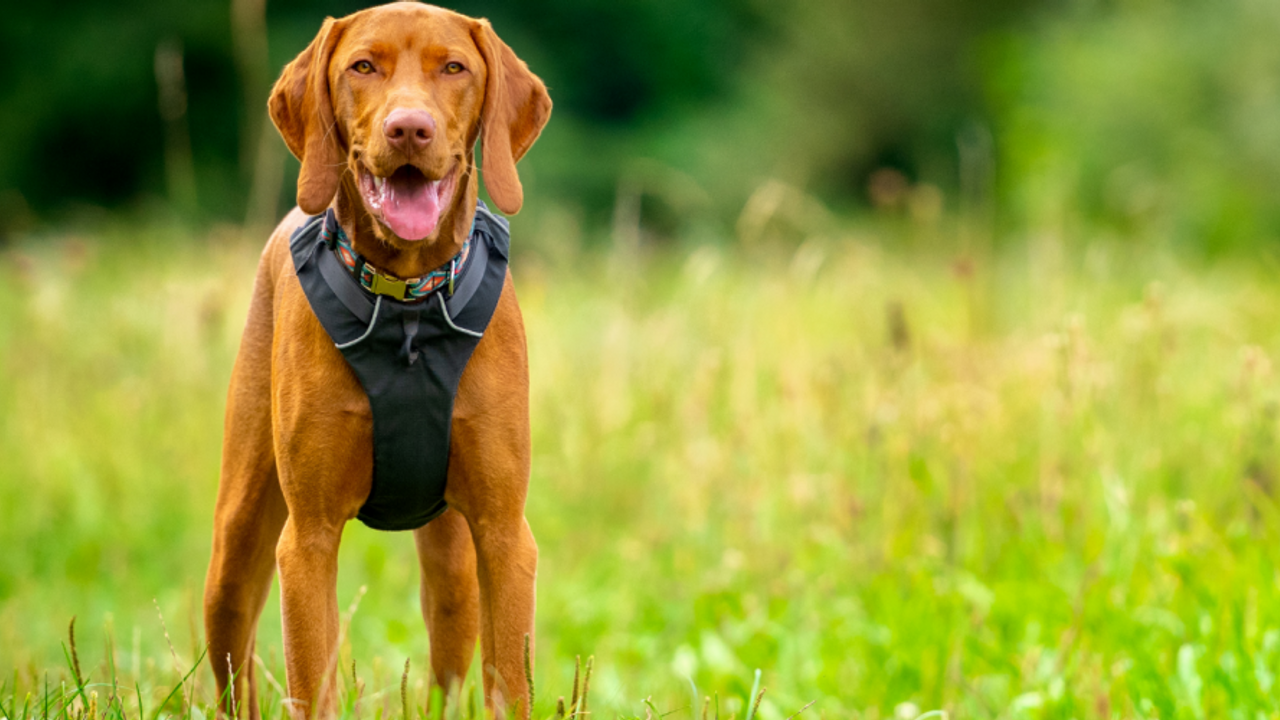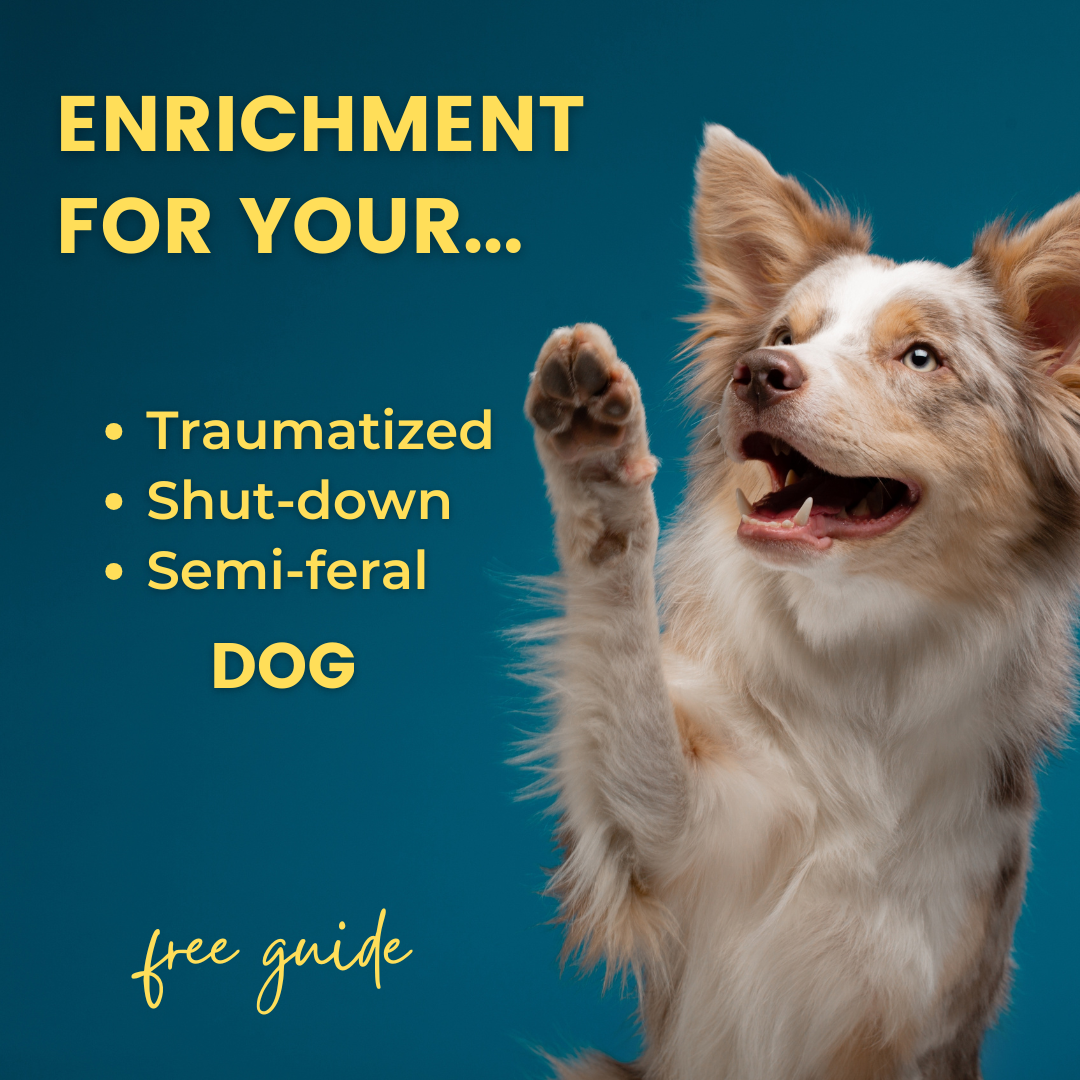
Does your sensitive dog avoid their harness? This is a common problem for dogs who don’t love being handled. Last week, I covered Part 1 of harness training for sensitive dogs. We started with the harness on the floor, and rewarding the dog when they approached it. We ended last weeks’ session with the dog putting their head into the harness and tolerating the weight of it on their neck.
This week we pick up where we left off and finish up this conservative harness training plan. Here is a summary of what’s covered in the video:
Choose your position wisely
When we harness our dogs, most of us stand up and lean over while fastening the straps. That can be uncomfortable for even “well-adjusted” dogs. Stay seated throughout this training, and consider continuing to sit or squat down when harnessing your dog going forward.
You can work on your dog more happily tolerating people leaning over them to put the harness on, but that’s extra work that you can avoid if you’re ok modifying your own behavior and sitting down instead.
Ways to break down working with harness straps
If you need smaller harness training steps than are shown in the video, you can vary:
- How much you move the straps;
- Whether the straps touch the dog
- For how long you handle the straps at a time.
I started with just reaching toward the straps but not touching them. Then I briefly touched a strap, without moving it, only when little Pancake didn’t show any avoidance behaviors like leaning away. Next I reached and moved the strap just an inch or so.
Decide ahead of time at each step of harness training, whether you mean for the strap to touch your dog’s torso when you move it. For many dogs, having the straps lifted to touch them is concerning at first, so you’ll see that I started by moving straps without letting them touch Pancake, before adding the touch in.
Although I didn’t cover this in the video, you can also vary how long you’re holding and moving the straps.
How many hands?
Your dog might find it less concerning when you reach toward them with one hand, but eventually you’ll need both hands to fasten the harness. When you switch from reaching with one hand to reaching with both hands, you might need to make other aspects of that step easier. For example, say that with one hand, you were able to lift the strap all the way to meet its attachment point. When switching to two hands, you might drop back to just touching the straps at first.
Easy does it
Stop training and back up to an easier step if you see any of these behaviors from your dog during harness training:
- Your dog shifting their weight away from the harness, or;
- Backing away from the harness, or;
- Getting up and moving away, or;
- Stretching to get a treat without moving their feet, or;
- Hesitating to approach the harness.
If you see any of these signs, immediately decrease the difficulty of the training. You’ll see several examples of these mistakes in last week’s video.
If you try these tips and have success, or trouble, we want to hear from you. Join our Facebook group and post your questions or comments there, or email us at [email protected]!
Looking for more support, weekly Q&As, guest speakers, and discounted private training? Check out our monthly training membership.
Categories


Have a dog who is too anxious to have fun? Grab this free guide & video lesson all about how to teach your extremely fearful dog their 1st enrichment game.


Community
We offer a free private Facebook support group for owners of fearful dogs to connect and share their stories. Join us there.


